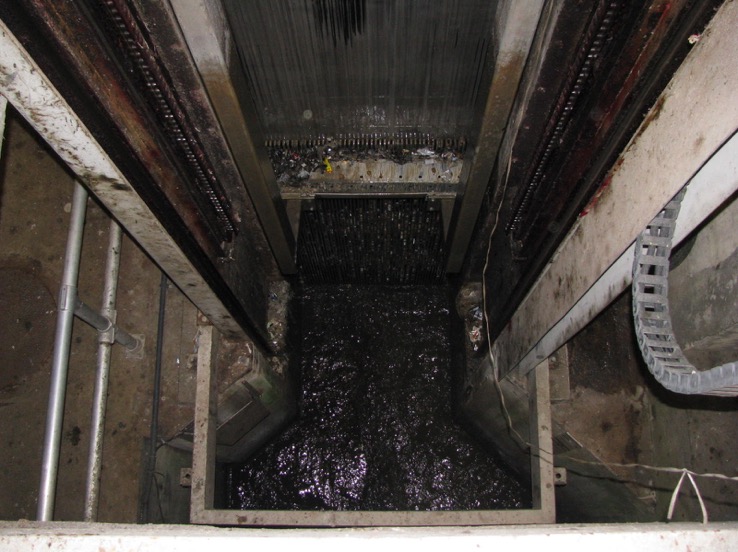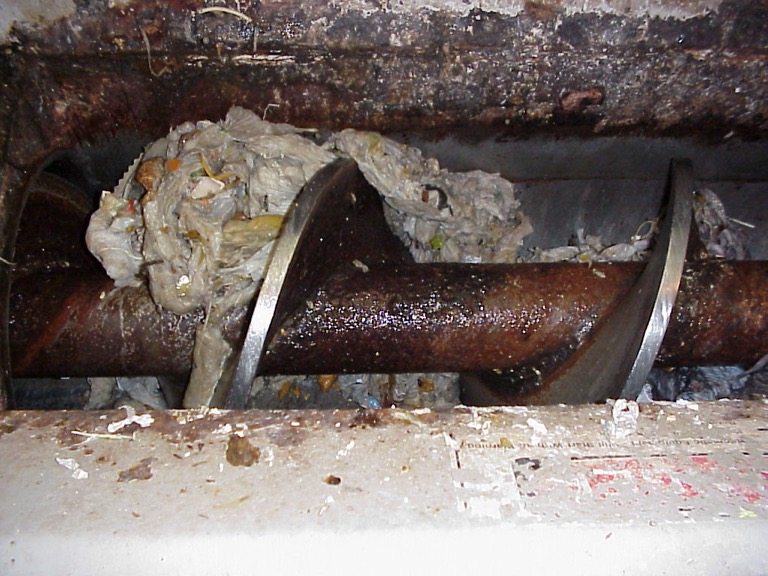Wastewater Treatment Starts with Screening Out Items That Don’t Belong
March 14, 2019As long as everything works the way it’s intended, most of us take for granted the water and wastewater services we use every day. But have you ever been curious about how water gets to your tap? Ever wonder what happens after you flush the toilet?
Through a series of semi-regular posts, we’re going to try to demystify the process. We’ll take you behind the scenes at LCA to explain the treatment processes, infrastructure, and logistics that go into providing you with safe, reliable water and wastewater service.
Although this is technically our third post in the series (see Did You Know Rainstorms Change the Water Treatment Process? for the first and Pump it Up: The Role of LCA’s Giant Wastewater Movers for the second), we’re going to back up a bit and start at the beginning of the wastewater treatment process — in this case, using Allentown’s as an example.
In most cases, the city’s sewer system relies entirely on gravity. When you flush the toilet, waste flows downhill from a series of pipes in your home to a larger pipe — called a house lateral — outside your home. The lateral connects to an even larger line, called a sanitary sewer main, that carries waste from other homes and businesses. Eventually, through a series of progressively larger pipes, the city’s waste is carried to the Kline’s Island Wastewater Treatment Plant.

At the plant, two large sewer mains — 60 and 36 inches in diameter — end at a place called the Headworks. Before the wastewater flows any further, there’s a critical step: It must be screened to remove certain objects that 1) don’t belong and 2) could damage expensive equipment.
For this step, we rely on two 4-foot-wide sets of vertical, stainless steel bars (called screens — see main picture) that trap things like baby wipes, feminine hygiene products, condoms, diapers, paper towels, plastic bags, large clumps of grease — all kinds of things that should never be flushed or sent down the drain.
The 32 vertical bars in each set are about 14 feet long and are spaced ¾ inches apart. To prevent clogs, the trapped objects must be removed regularly. This is done through a mechanism that rakes off the screens. The debris are moved by an auger/screw press that compacts them and squeezes out any remaining water. From there, the screenings are pushed into continuous rolled bagging material and discharged into a Dumpster.

The bagged screenings are then moved to a 20-yard roll-off container with a solid cover. The roll-off container is removed weekly by a contracted waste hauler and taken to a sanitary landfill for disposal.
After the screening is complete, the wastewater flows into the Aerated Grit Chambers for the next step in the process: transfer to our two primary settling tanks.
Despite this system and our best efforts, a significant amount of trash makes its way past the screens and eventually collects in the primary digesters, which are 80 feet in diameter and hold about 1.2 million gallons of waste each. This excess waste causes a number of challenges and significantly increases the cost of the treatment process. Countless man-hours are required t forth to clean the digesters, and the staff must wade through the remnants of human waste to get the tanks clean.

The biggest offender? Feminine hygiene products (which should NEVER have been flushed in the first place!). The stringy, cloth-based materials build up on the sludge collection mechanisms and must be picked off by hand when we take the tanks offline for cleaning, inspection and service. Hundreds of thousands of plastic tampon applicators end up floating on the surface of the primary digesters (which are meant to break down human waste) until we clean the vessels, which is done on a five-year cycle. When we open the tanks, we usually find a 2-foot thick layer of material — consisting mostly of the remnants of feminine hygiene products.
This loss of space reduces the effectiveness of the digestion process. Additionally, as a result of constantly chopping up plastics and cotton-based materials (rags), our pumps must be rebuilt on a frequent basis — components such as cutters and impellers wear out more quickly under the increased load.
When the debris that has collected in the digester is finally cleared out, there is a significant expense for disposal. In 2018, nearly 927 tons of debris were removed from one digester alone, and the landfill tipping fees were $50,488.80!
We’ve seen many interesting and disgusting things removed by the screens over the years, including fetal pigs; fish; frogs; snakes; a bowling ball; toys; dentures; cell phones; pictures; and photo IDs.
What can you do to help? Flush only human waste and toilet paper!
For the rest in our Behind the Scenes series, please see:
Why Does Wastewater Need to be Treated?
Pump it Up: The Role of LCA’s Giant Wastewater Movers
Clean and Green: How Waste is Turned into Energy at Kline’s Island
Sludge 101: How Solids Are Removed From Wastewater
The Sludge Report: What Happens After Treatment?
How Is Liquid Waste Treated? It’s All About Biology
Tertiary Nitrification: How Ammonia Is Removed From Wastewater
Disinfection and Testing — the Final Steps in Wastewater Treatment